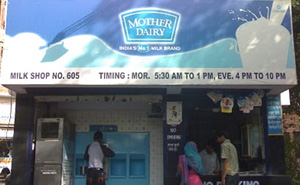Milk Consumption and Obesity in India
Tuesday, May 21, 2013 I am currently in New Delhi enjoying daytime temperatures of 45 degrees Celsius – I’d forgotten how hot this can be.
I am currently in New Delhi enjoying daytime temperatures of 45 degrees Celsius – I’d forgotten how hot this can be.
A good opportunity to take a look at recent literature on obesity in India, where this is clearly becoming an increasing problem – India now has the largest number of people with obesity (using the South Asian definition of BMI 25) and perhaps the most people living with diabetes anywhere in the world.
An article that caught my eye is the recent analysis of the relationship between the consumption of milk and milk products and obesity by Satija and colleagues from the Public Health Foundation of India, New Delhi, published in PLoS One.
As anyone familiar with Indian cuisine is well aware, milk in its various forms including plain milk, in tea (where tea leaves are traditionally boiled at length in watered down milk), curd, and buttermilk (often consumed as lassi) is considered a staple of the Indian diet and apart from lentils (another staple), often the only significant source of protein for the vegetarian masses.
Information on dairy consumption assessed using a Food Frequency Questionnaire was obtained from the cross-sectional sib-pair designed Indian Migration Study (3698 men and 2659 women), conducted at four factory locations across north, central and south India.
After controlling for potential confounders, the risk of being obese (BMI≥25) was almost 50% lower among women among those who consume one or more portions of plain milk daily than those who did not consume any milk.
On the other hand, daily tea consumption of more than one portion was associated with a 50% increased risk of obesity and increased waist circumference in men but not among women.
There was no association between curd and buttermilk/lassi consumption with obesity and high waist circumference among either men or women.
Thus, there appears to be an inverse association between the daily consumption of plain milk with the risk of being obese, but the authors hasten to add that this is merely an association and does not imply causality. In plain english, this means that we should not rush to conclusion that decreased milk consumption should be added to the list of possible causes of obesity in South Asia or that drinking more milk will help my Indian brethren lose weight.
On the other hand, given that there are several reasonable hypotheses linking adequate dairy intake to energy homeostasis, this is certainly an issue that may require further study.
I do recall that my grandfather, who lived to be a 104 and was always thin as a rail, would never go without his daily glass of warm milk before bedtime (but he’d also go for long brisk walks at 5 am every morning – so no conclusions can be drawn from this n=1 case study).
AMS
New Delhi, Arya


